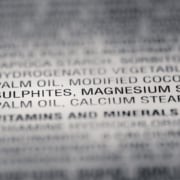Growing Demand for Organic Ingredients Leads to Supply Challenges
The need for fresh ingredients by consumers has led many farmers to go into organic farming. According to data provided by the USDA, the number of organic farmers in the US has increased by almost 300% since 2002. This growth is to meet the demands of consumers who prefer organic foods more than those grown in conventional methods.
Why Is It Difficult to Completely Go Organic?
Although there is a rapid increase of organic operators in the country, it is crucial to take note that only about 0.7% of the total operable farms within the country are classified as organic. Many farmers pointed out that the main reason why converting their conventional farmland to organic is difficult because it is expensive as well as time-consuming. In general, farmers have to wait for at least three years to be able to convert their farms. Unfortunately, during the first year of turning their land using organic practices, the produce that they grow is not sold at organic prices. Meaning, they are still paid cheap even when they are spending more on organic practices. This is leading to the supply challenges in the market.
Solutions to The Supply Challenge
To solve the supply challenges, farmers are given several incentives to make the necessary switch. These include the Environmental Quality Incentives Program (EQIP) that offers first-timer organic operators the right technical assistance to grow food the organic way. But, it is not only the government that provides support. Even food manufacturers, as well as retailers, have supported and implemented programs just to encourage farmers to boost their harvest. In fact, companies like Nature’s Path Foods, Whole Foods, Organic Valley, and Stonyfield Farms have provided grants to organic farmers to boost their production.
While organic farmers can supply the needs of food retailers and manufacturers, another problem is where to source specialty ingredients that are not grown in the United States. The solution proposed by the government was to get into digital platforms like Mercaris Auction Platform or GreenTrade.net to trade tons of organic products into the market.
All stakeholders are doing their best to provide the resources needed by the consumers. For instance, the Organic Trade Association was set up to provide suppliers and manufacturers the necessary information about their produce such as where to source their supplies, market data, and real-time pricing.
On the other hand, retailers like restaurants and grocery stores have also worked closely with organic farm operators to give them the idea of how much they will need to sustain their businesses. For instance, retail giant Walmart has worked with local organic farmers by giving them the outline of how much they need for the entire year so that the farmers can strategize on how they will be able to deliver the demands and needs of the end users.
The truth of the matter is that, while organic farming is prevalent, the number of organic operators is still not enough to be able to create a sustainable supply of products to the retailers and consumer product companies.
Inspired by www.fooddive.com/news





